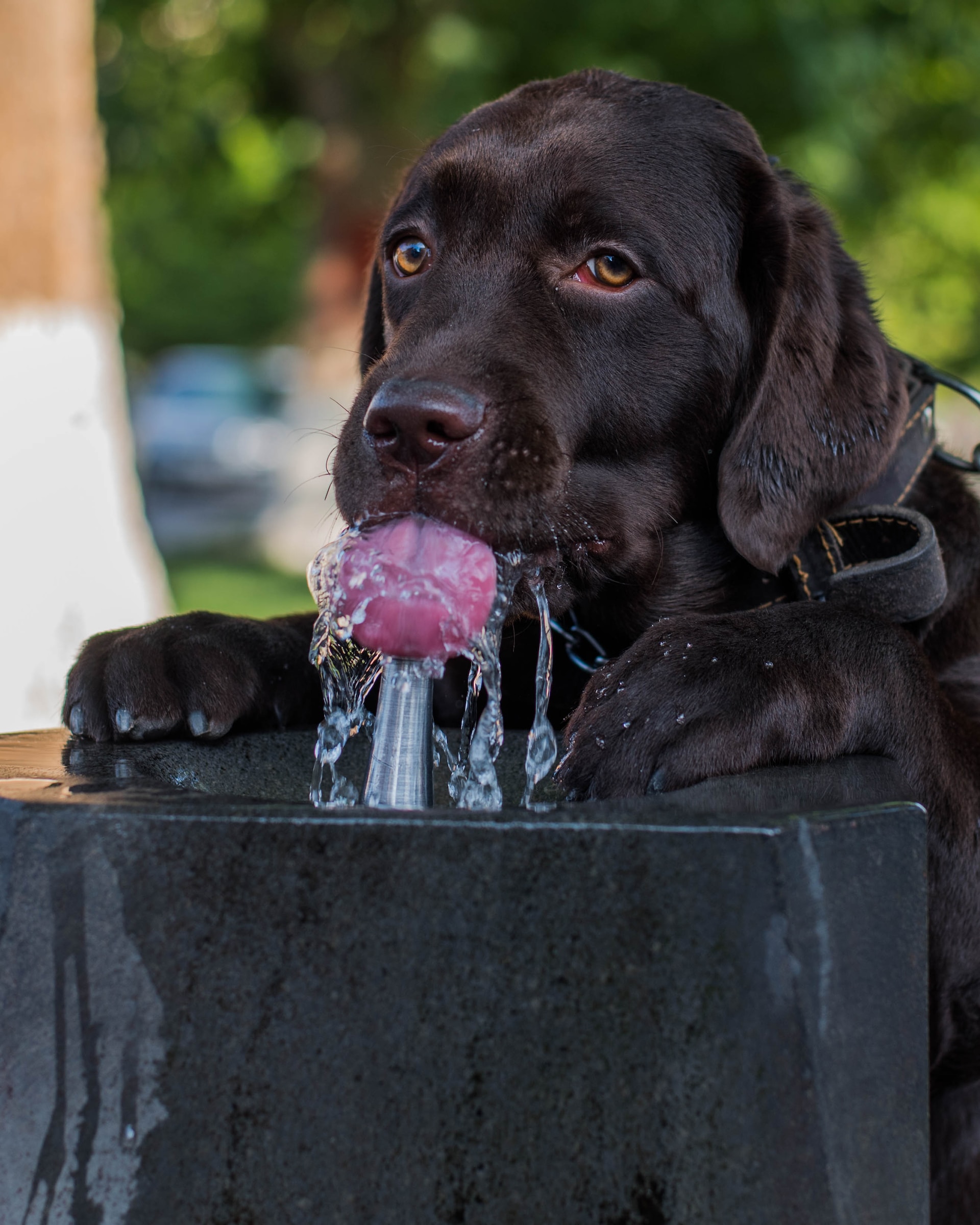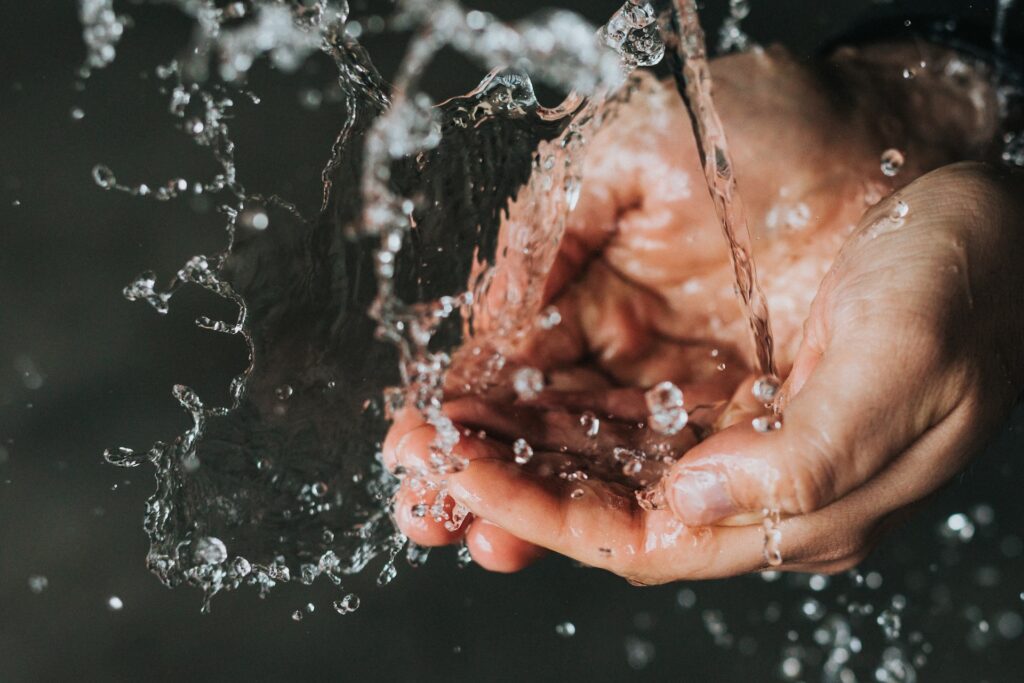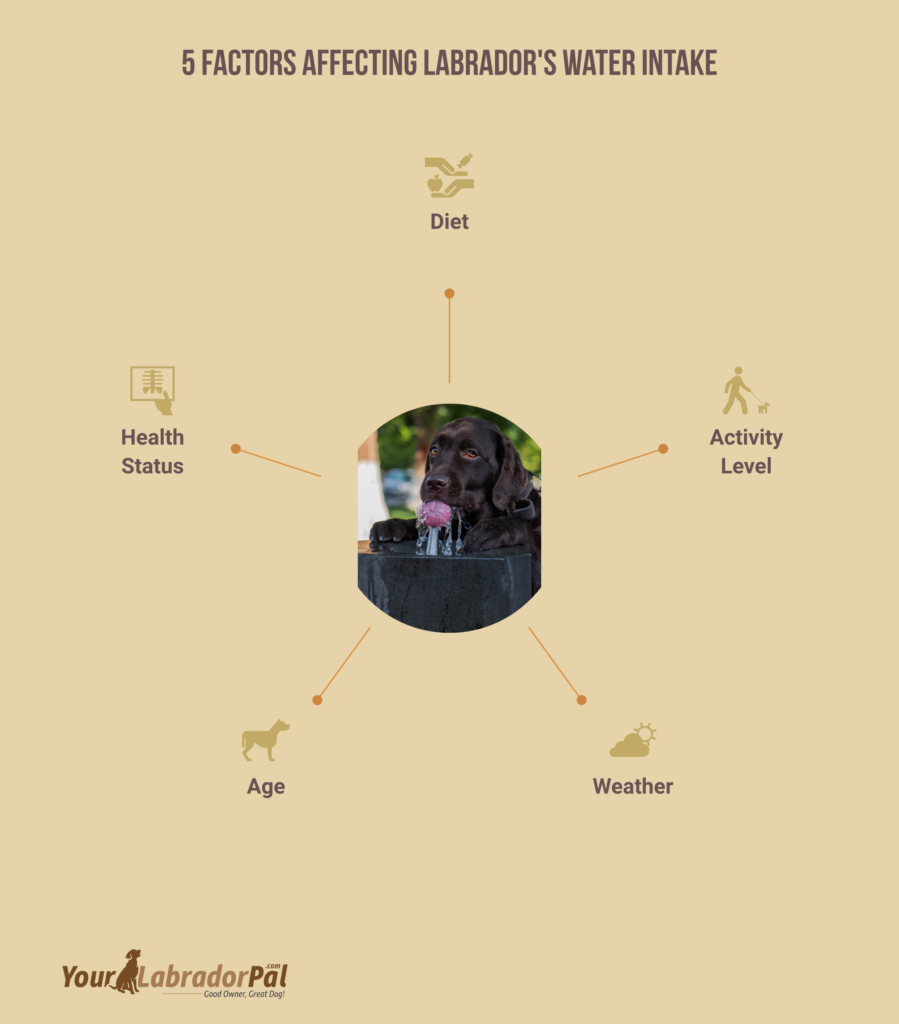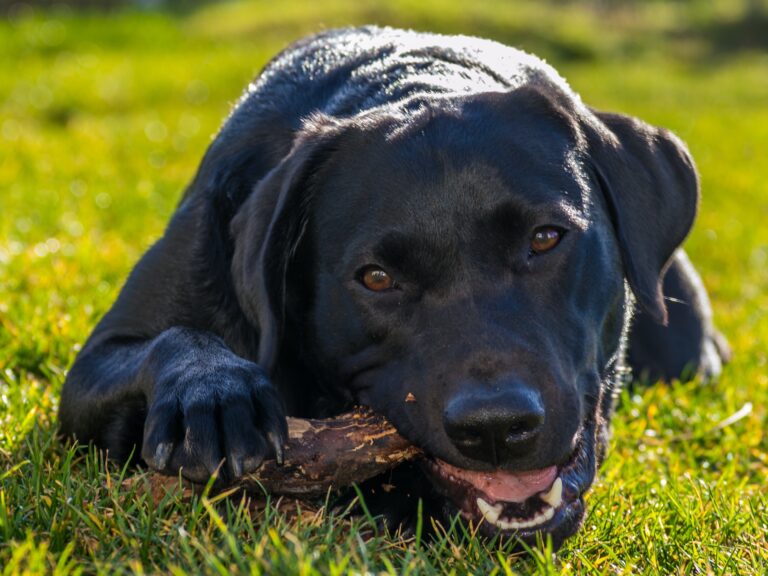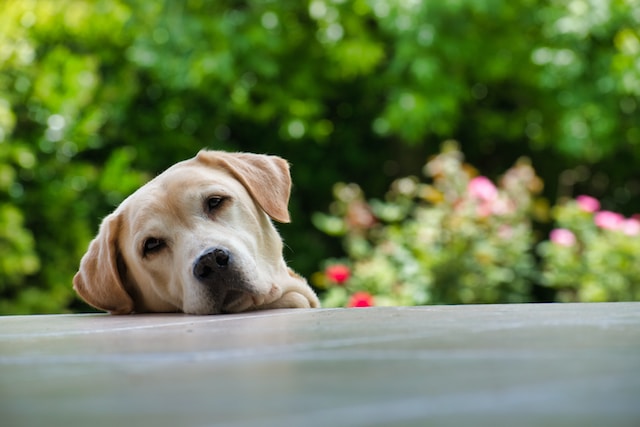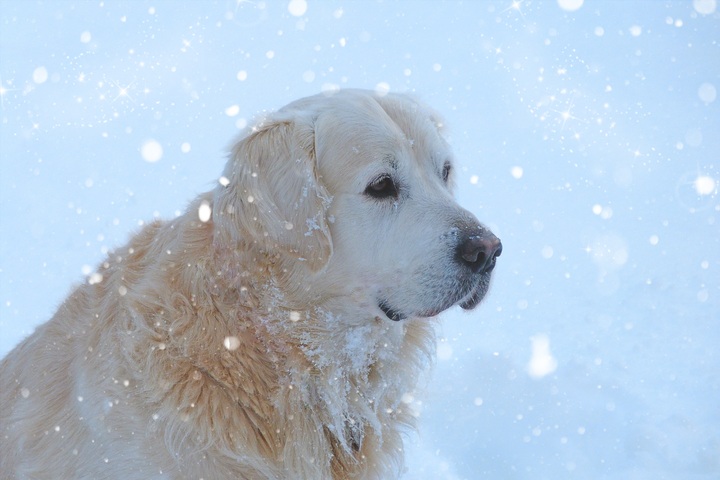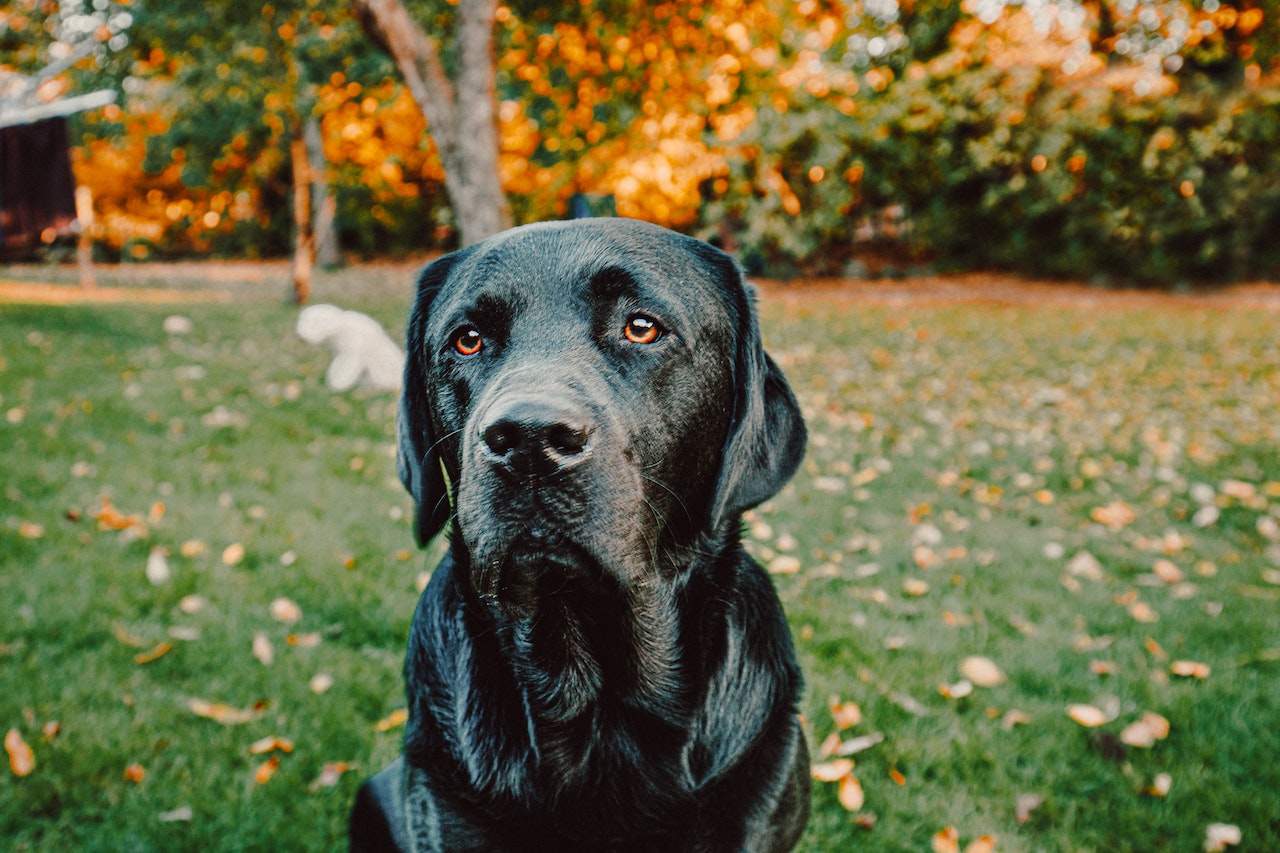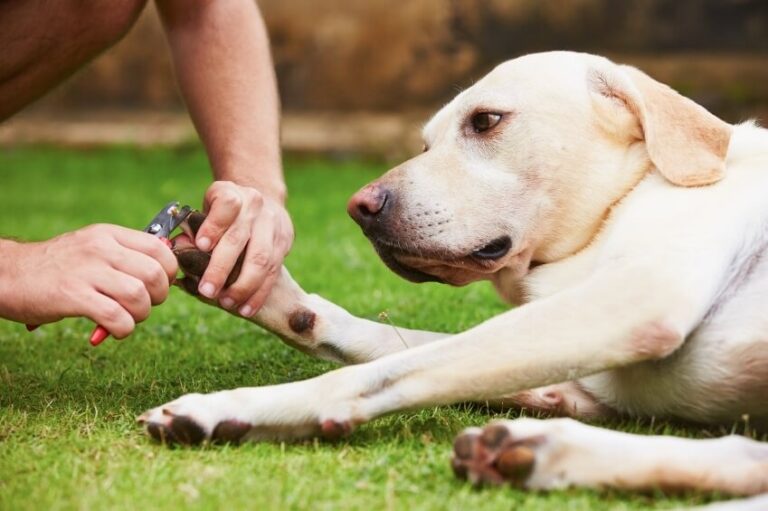Labrador Owners’ Guide: How Much Water Should a Labrador Drink a Day?
You may be wondering how much water should a Labrador drink a day. I understand that there is nothing more important than ensuring that our pups are kept hydrated. While it may seem trivial, the amount of water a dog drinks is crucial to their overall well-being. After speaking with my veterinarian and doing my research, I found that a healthy labrador should drink about one ounce of water for every pound of body weight per day. That means if your furry friend weighs 70 pounds, they should drink up to 35 ounces of water daily.
However, this still depends on several factors, which we will discuss in this article. So if you need clarification on whether you’re pup is getting enough water, continue reading for more information.
The Importance of Water for a Labrador’s Health
As a dog parent, it’s essential to understand the essence of water in our pets’ lives. Specifically in Labradors, whose health and physical activity heavily depend on the amount and quality of water they consume. So how does water affect their health?
1: Water Consumption Levels
Labrador Retrievers require staggeringly high levels of water consumption. They have high metabolic rates and are generally very active. For every ten pounds of body weight, a Labrador should consume at least a cup of water daily. This intake can be provided by frequently topping up their water dishes and ensuring they always have access to clean water. Interestingly, their water needs will increase with higher temperatures or more extended periods of activity. It’s also crucial to note that feeding dry dog food will require additional water intake.
2: Promotes Digestion
Labrador Retrievers have strong appetites; therefore, eating fast is common. Drinking water before and after their meals can prevent them from choking or having digestion problems. As it passes through the digestion system, it helps break down food and move it along smoothly. Water also ensures nutrient absorption and keeps nausea and constipation at bay.
3: Ensures Proper Body Functioning
Water intake plays an essential role in ensuring all body systems function normally. Proper hydration prevents problems such as kidney or liver disease, kidney stones, or bladder issues. A dehydrated Labrador will have difficulty regulating their body temperature, leading to other complications such as heat exhaustion or heatstroke. As a fur parent, it’s crucial to ensure that your Lab has sufficient water access to prevent these problems from happening.
4: Promotes Joint Health
Labrador Retrievers are well-known for their athletic ability and are prone to joint problems as they age. Adequate water intake is crucial for joint health as it adds lubrication to their joints. Water also helps maintain the elasticity of the ligaments, cartilage and allows for smoother movement. Giving your dog access to clean water prevents joint problems such as arthritis, hip dysplasia, and osteoporosis.
5: Hydrates the Skin and Coats
Water consumption doesn’t just benefit the internal organs in Labradors. It also plays a significant role in ensuring healthy skin and coats. Proper hydration gives their skin the necessary moisture levels to prevent dryness and itching. Adequate water intake also ensures the coat remains soft and shiny, making the dog look good and feel better.
Monitoring their water consumption levels, especially during hot or active days, will help prevent dehydration and other serious medical conditions.
How Much Water Should a Labrador Drink a Day?
So how much water should a labrador drink a day? As mentioned above, it is recommended that a healthy labrador should drink about one ounce of water for every pound of body weight per day. It means if your Labrador weighs 70 pounds, it ought to drink up to 35 ounces of water every day. We will discuss other factors below:
✔️Diet
The type and amount of food you feed your Labrador daily can affect their water intake. For instance, dry food typically requires more water than wet food as it is more concentrated. Moreover, adding vitamins and supplements to your dog’s food might require more water to properly digest them. As a result, ensure you always provide your furry friend with enough clean water throughout the day.
✔️Activity Level
Dogs are like humans; the more active they are, the more water they require. For instance, taking your Labrador for a long walk or run might need more water immediately after the activity. Therefore, always carry a water bottle and a portable bowl when going out with your dog.
✔️Weather
Like humans, dogs lose water and get dehydrated faster on hot, sunny days than cooler days. Your Labrador might require more water intake during the hot summer to maintain good health. Dehydration can lead to other problems, such as kidney stones, heat stroke, and death.
✔️Age
Puppies less than 6 months require frequent hydration throughout the day. On the other hand, older dogs might have a decreased sense of thirst and need to be reminded to keep drinking water. As a result, ensure that you keep a water bowl close to your Labrador pet and encourage them to drink water often.
✔️Health Status
If your dog is sick, it might require more water intake to recover from the illness. Fever, diarrhea, and vomiting are some conditions that can lead to dehydration. Therefore, always check with your vet if you notice any changes in your dog’s water intake, as frequent urination or lack of thirst can indicate an underlying health condition.
Monitor their water consumption levels and adjust according to diet, activity level, weather, age, or health status changes.
Signs of Dehydration in Labradors
Dehydration occurs when a Labrador loses more fluids than it takes in, disrupting the delicate balance required for proper bodily functions. Understanding why dehydration happens to Labradors is crucial for responsible pet ownership, whether it’s due to intense physical activity, hot weather, or an underlying health issue. I will discuss to you the signs of dehydration in Labradors so that you can recognize them:
📌Little Energy
The first and one of the most significant signs of dehydration in Labradors is a lack of energy. Just like in humans, when we don’t drink enough water, we feel tired and lethargic. In dogs, a lack of energy is often accompanied by panting, and they may also refuse to play or exercise. Your furry friend may seem weak or listless, and their usual bouncy self may be nowhere to be found.
📌No Interest in Eating
Another sign of dehydration in Labradors is a lack of interest in food. This is often mistaken for pickiness but can be one of the first symptoms. If your furry friend usually has a healthy appetite and suddenly loses it, it may be time to look closer at their water intake. Keep a close eye on your dog’s eating habits, as they will often develop other health issues if they are not eating regularly.
📌Dry Mouth
Unlike humans, dogs don’t sweat to cool themselves down. Instead, they pant to regulate their body temperature, meaning they must have a moist mouth. A dry mouth is a clear sign of dehydration, but it’s important to note that some dogs may have naturally dry mouths. It’s crucial to monitor your furry friend’s mouth and overall behavior to determine whether the dryness is a symptom of dehydration or something else.
📌Thick, Rope-like Saliva
Healthy saliva is thin and clear. However, when a dog is dehydrated, its saliva can become thick and rope-like. It is often an early indicator that your dog is not getting enough water. Take note of any changes in your dog’s saliva, and watch for dehydration symptoms.
📌Sunken Eyes
Sunken eyes are a clear sign of dehydration in Labradors. A dog’s eyes should look bright and alert, and the eyeballs should take up the entire socket. But when a dog is dehydrated, their eyeballs can recede slightly, making their eyes appear sunken. It indicates they are not getting enough water, and their kidneys may not function correctly.
Keep in mind that prevention is always better than cure, so be sure to provide your furry friend with ample water, and if you notice any of these signs, consult your veterinarian at the earliest if necessary.
What to Do if Your Labrador Refuses to Drink Water Regularly
Unfortunately, some Labradors may refuse to drink water regularly; it was once my concern too! So how do I take action whenever my Labrador refuses to drink water?
1: Determine the Root Cause
The first step in getting your Labrador to drink water regularly is to identify the underlying cause of the problem. Common reasons for your dog’s refusal could include changing the water source, a dirty water bowl, or an underlying medical condition. In some cases, the dog may not be thirsty, especially in colder climates. Once you establish the root cause, you can take the appropriate corrective actions.
2: Change the Water Source Regularly
Dogs have a sensitive sense of smell, which could explain why your Labrador may refuse to drink water. If you have not changed the water source in a while, it could develop a foul odor that puts off your dog. To avoid this, you should change the water source regularly, preferably every day. Also, make sure that you keep the water bowl clean to avoid bacterial growth.
3: Try Different Water Bowls
Some Labradors strongly prefer a particular material or shape of a water bowl. If your dog is not drinking from its water bowl, you may try using a different type of bowl to see if it makes any difference. For instance, some dogs prefer metal water bowls over ceramic ones because metal does not retain odors or bacteria.
4: Monitor Your Labrador’s Health
In some cases, the refusal to drink water could be due to an underlying medical condition. For example, kidney disease, diabetes, and fever could lead to dehydration in dogs. You should pay attention to your dog’s drinking habits and consult a veterinarian if you notice a sudden change in their water consumption routine.
5: Offer Different Water Sources
If your Labrador is still not drinking water regularly, you may try offering them different water sources. For example, add a small amount of low-sodium broth to your dog’s water bowl to make it more appealing. You can also use canned dog food, which contains significant water that helps keep your dog hydrated.
6: Offer Wet Food
dogs that eat dry kibble may need to drink more water to keep their bodies hydrated. If your Labrador is interested in drinking less water, you can offer them wet food to supplement their water intake. Wet food contains higher levels of moisture, which can help your pet maintain proper hydration levels.
7: Introduce Flavorings to the water
If the water bowl is clean and fresh, start introducing flavorings. Just like humans, dogs like variety; sometimes, plain water can be boring. You can add a small amount of low-sodium chicken or beef broth to the water or even a slice of cucumber or apple. These additions can stimulate your dog’s interest and encourage them to drink more water.
Taking care of your furry friend’s hydration levels is essential to their overall well-being, so always monitor their water intake if necessary.
Frequently Asked Questions
Is it normal for labs to drink a lot of water?
Labrador Retrievers should drink about half a gallon of water a day. Of course, if your pup is super active or lives in a hot and dry climate, they may need more. The bottom line is, just make sure your Lab has access to plenty of fresh water.
How do I know if my dog is drinking too much water?
If you notice your dog drinking excessive amounts of water, and it’s not hot outside, or your dog hasn’t had intense physical activity, it’s time to investigate further. Increased thirst could be a symptom of an underlying condition requiring a vet trip. Remember, responsible pet ownership is not just feeding them and giving belly rubs but also watching their health.
Can I give my Labrador water with meals?
Yes, you can. However, it’s important to remember that meals should be served separately from the water bowl. This is because drinking after eating could lead to digestive problems and indigestion for your pup. It’s best to wait an hour after feeding before offering water. Keeping a healthy balance of food and water is essential to maintaining your Labrador’s health.
Should Labradors drink water overnight?
While some people argue that it might lead to messy accidents or behavioral issues, I personally believe that denying my pooch water access is simply not an option. I mean, how would I feel if someone told me I couldn’t have a drink if I woke up thirsty in the middle of the night, right? Moreover, Labradors have higher than average water requirements, especially if they’re active during the day or scorching outside. So, as far as I’m concerned, when in doubt, hydrate!
Does UTI make Labrador thirsty?
When dogs have a urinary tract infection, they may feel constant pressure to urinate, causing them to drink more water to alleviate the discomfort. However, monitoring their water intake is essential because too much can lead to other health issues. So, if you notice your pups drinking more than usual, take them to the vet just to be safe. Trust me, as someone who loves their pup; it’s worth the peace of mind.
What does a labrador do when it’s thirsty?
These pups will do almost anything to satisfy their thirst, from skillfully lapping water out of a nearby bowl to sticking their whole face in a pool or lake. But your pup will also become more vocal and can often be seen sniffing around, searching for a water source. So, if you notice any of these behaviors, grab a water bowl and quench their thirst!
Final Words
So after doing my research on how much water should a labrador drink a day, it is clear that Labrador Retrievers should drink about 35 ounces of water daily. However, if your pup is super active or lives in a hot and dry climate, they may need more. As for me, I always offer my pup an ample supply of clean and fresh water throughout the day, just in case they get thirsty. So, as always, check in with your vet if you notice any changes in your pup’s drinking habits. Ultimately, responsible pet owners ensure that their Labradors stay hydrated and healthy!

